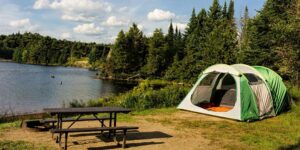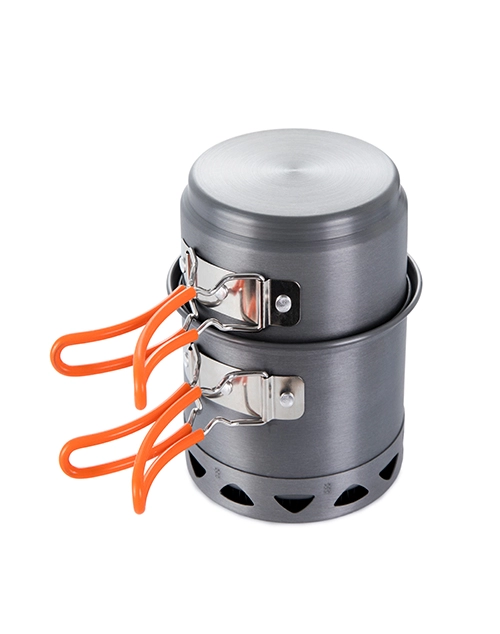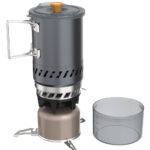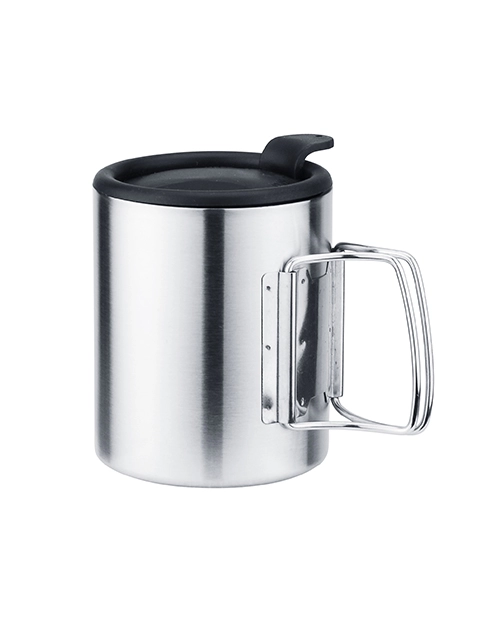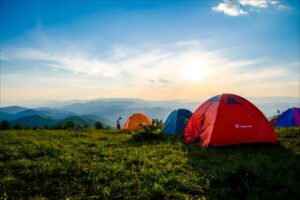
Unfortunately, camping is not always sustainable if we aren’t careful with our behaviors. Adopting sustainable camping habits is a simple approach to help conserve and appreciate the natural environment.
What Is Eco Camping?
Eco camping is camping in a way that has the least harmful influence on the natural environment. Sustainable camping is being conscious of what we bring and do when camping.
This might include supporting campgrounds that are open about their sustainable methods, only participating in activities that we know how to do ethically, and avoiding broadcasting the whereabouts of local camping areas on social media.
Why Is Eco-Friendly Camping Important?
Living a sustainable lifestyle is vital in general, but it is more crucial when we engage directly with nature. When we camp, we are in wild, natural surroundings where humans do not often spend time.
Many of these locations are free of pollution daily, and they also serve as important natural habitats for animals and plants. Keeping them protected ensures that these ecosystems stay healthy and flourishing.
When we choose to practice sustainable camping, we may enjoy the great outdoors without damaging it.
10 Sustainable Camping Tips
- Pay the Fees
Most official campgrounds and parks charge admission, camping, or hiking fees. While this may make some sites less accessible, fees serve a function.
The fees are intended to safeguard the natural environment you want to enjoy. They guarantee that infrastructure is maintained, park rangers are compensated, and these magnificent regions remain such.
Many parks, however, have an honour system with little or no regulation. It may be tempting to avoid paying, but please pay the charge so that these valuable sites can be enjoyed for years to come.
- Stay in Designated Areas
While it may appear innocent to go off-trail or look for a secret campground, it may not be sustainable. There’s a reason why campgrounds and natural parks have specific hiking and camping zones.
Staying in specified areas preserves the natural ecosystem, respects wildlife, and protects you from unpleasant encounters such as poison oak. If you want to explore more rural or off-the-beaten-path areas, see the following advice for doing so in a sustainable manner.
- Research Your Location Beforehand
Before venturing into the woods or the desert, do some homework on your destination. Are you planning a rough hiking trip? Then make sure you know where you’re going, what you’ll need to bring, what the natural environment is like, and what animals are indigenous to the region.
It’s also a good idea to research the history of the location you intend to camp in. Are there any current concerns to be mindful of, such as overtourism or water pollution? How does the local population react to tourists camping and trekking in the area? What issues has it caused?
After you’ve done your study, you may camp in a way that won’t harm the neighbourhood.
- Choose Campgrounds that are Eco-Friendly
It may appear that all campgrounds should be environmentally friendly. After all, they’re smack in the heart of nature! But this is not always the case. It is critical to examine the types of amenities available at your campground and how they are maintained.
If possible, look for authorized eco-friendly campgrounds in your region; however, bear in mind that not all eco camps are promoted as such. When selecting a campsite, find out who operates it, what environmental programs they are pursuing, and how they dispose of camper garbage.
- Plan Trips Outside of Peak Season
Peak season normally occurs during the summer or dry season, which makes perfect sense. After all, who wouldn’t want to enjoy the great outdoors during the best season of the year? However, there is generally enough wiggle space on this timeframe so that you are not camping at the same time as everyone else.
Camping is a very common hobby in regions like California, but guess what? California offers excellent weather all year. You do not have to arrive between June and September to appreciate the surroundings.
If you have to camp during peak season, consider lesser-known campsites and leave the most popular ones for the off-season. This will also boost your chances of securing a campground while cutting expenses.
- Leave No Trace
A common phrase among hikers and campers is “pack out what you pack in.” Sustainable camping involves leaving little to no trace. Campgrounds normally have dedicated garbage bins, so please don’t litter and properly dispose of your rubbish.
If there is no trash collection in the region, carry your bags and store them until you return to a location where you may properly dispose of them.
When packing up your campground, ensure sure the surrounding environment is exactly as it was when you arrived. Ideally, avoid bringing anything that will create waste in the first place. How? Follow the next tip.
- Bring Reusable, Plastic-Free Items
Packing reusable, plastic-free goods help to reduce garbage during your camping vacation. Bring a reusable water bottle rather than a disposable water bottle. Check to determine whether the campsite has a water refilling station. If not, plan ahead of time to ensure you have adequate water for the journey.
To reduce packaging waste, store commodities such as coffee, tea, snacks, and dried foods in reusable jars or containers. Prepare your meals ahead of time so that you may transport them in environmentally friendly containers.
Shampoo, conditioner, and soap bars are excellent zero-waste options to pack. Avoid purchasing single-use products such as disposable wipes or travel-size toothpaste. Instead, bring the toiletries you already own.
- Choose Toiletries & Cleaning Items That Are Environmentally Safe
One of the most essential things we can do to camp sustainably is to use toiletries and cleaning products that are not detrimental to the environment.
When camping, you’ll most likely be brushing your teeth, bathing your body, or doing your dishes outside. To avoid polluting the environment, these items must be completely natural and biodegradable.
Don’t forget to apply the same standards to the products you put directly on your body, especially sunscreen that can sweat or wash off into nearby waterways.
- Use What You Have, Rent What You Don’t
It’s tempting to run out and get all the newest technologies and camping gear, but avoid the impulse!
Unless you’re a regular camper, the majority of that stuff will go unused, making it an unsustainable investment. Most likely, you already have the necessary supplies, such as reusable containers, water bottles, appropriate clothing, blankets, pillows, and maybe a sleeping bag.
If there is something you really need, such as a tent or a camping stove, you may rent it. You do not need to purchase these goods fresh new. Check out your local sports goods store or perform a fast Google search to find out where you can rent the camping equipment you need.
- Pack sustainable gear.
When determining what to carry, prefer natural textiles to help restrict the spread of microplastics and reduce our environmental effect.
If you possess non-synthetic shoes, activewear, swimsuits, or bags, prioritize these on your packing list.
Final Thoughts
Sustainable camping does not have to be complex. If you enjoy the outdoors enough to go camping, you probably know how to do so responsibly!
Following the recommendations above will guarantee that your next camping trip is both enjoyable and environmentally responsible.
ODM service
Looking for reliable wholesale outdoor equipment? At Deermaple, we specialize in ODM service, offering high-quality, innovative outdoor gear tailored to your needs.
If you are interested in outdoor gear wholesale, please contact us.

